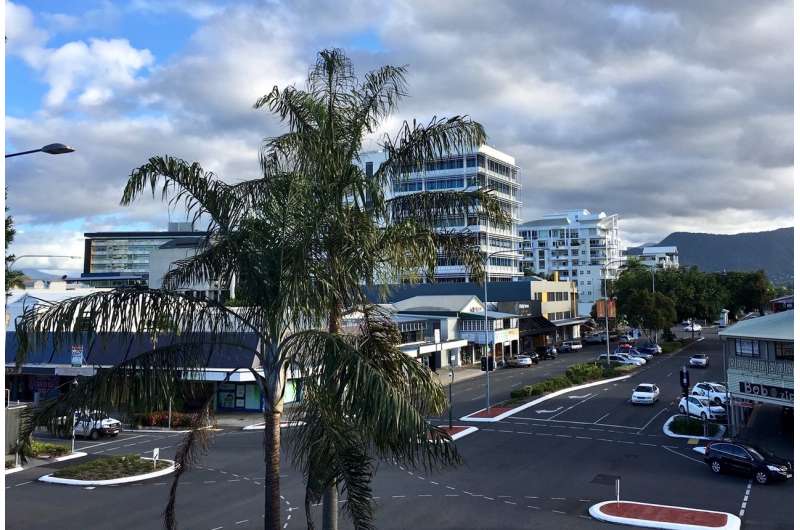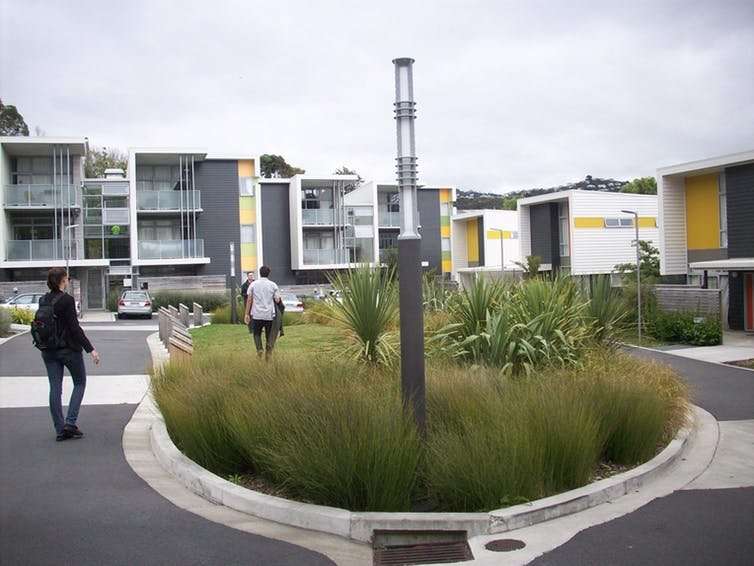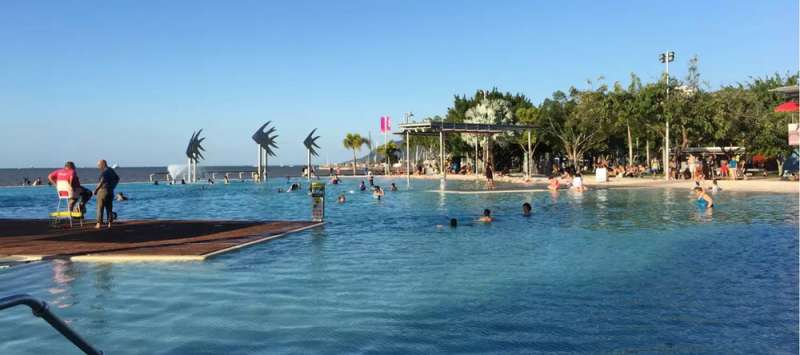Cities can grow without wrecking reefs and oceans. Here's how

"What happens if the water temperature rises by a few degrees?" is the 2018 International Year of the Reef leading question. While the ocean is the focus, urbanisation is the main reason for the rising temperatures and water pollution. Yet it receives little attention in this discussion.
In turn, rising temperatures increase downpours and urban floods, adding to the pressures on urban infrastructure.
Protecting the reef as Cairns grows
Cairns is an expanding Queensland city located between two World Heritage sites – the Great Barrier Reef and the Daintree Rainforest. While important research focuses on these sites themselves, not much is known about how the surrounding urban areas influence these natural environments. Similarly, little is known about how urban planning and design contribute to the health of the inner city and surrounding water bodies, including the ocean.
Cairns is a major Australian tourism destination with a unique coastal setting of rainforest and reef. This attracts growing numbers of visitors. One effect of this success is increased urbanisation to accommodate these tourists.
There are many opportunities to promote sustainable and socially acceptable growth in Cairns. Yet this growth is not without challenges. These include:
- impacts of climate change, including sea-level rise and ocean warming
- lack of comprehensive urban infrastructure strategy
- lack of comprehensive assessment of the benefits of integrated urban design to maximise coastal resilience and the health of streams and oceans.
As with most Australian cities, Cairns has an urban layout based on wide streets, mostly with little or no greenery. Rain gardens, for instance, are rare. Bioswales that slow and filter stormwater are present along highways, but seldom within the city.
The arguments for not adding greenery to the urban environment are familiar. These typically relate to costs of implementation and maintenance, but also to the speed with which water is taken out of streets during the tropical rainy season. This is because green stormwater solutions, if not well planned, can slow down the water flow, thus increasing floods.
However, cities can be designed in a way to imitate nature with solutions that are an integral part of the urban system. This can include dedicated areas of larger wetlands and parks, which capture water and filter pollution and undesired nutrients more efficiently, reducing polluted runoff to the reef.
Integrated urban design
Integrated urban design is an aspect of city planning and design that could be further developed to ensure the whole system works more efficiently. This involves integrating the three elements that make up urban infrastructure:
- the green – parks, residential gardens, rain gardens, green roofs and walls, bioswales, etc
- the grey – built drains, footpaths, buildings, underground vacuum
- system, etc
- the blue – streams, stormwater systems, etc.

Urban infrastructure, therefore, can and should be planned and designed to provide multiple services, including coastal resilience and healthier water streams and oceans. To achieve this, a neighbourhood or city-wide strategy needs to be implemented, instead of intermittent and ad hoc urban design solutions. Importantly, each element should coordinate with the others to avoid overlaps, gaps and pitfalls.
This is what integrated urban design is about. So why don't we implement it more often?
Challenges and opportunities
Research has shown that planning, designing and creating climate-resilient cities that are energy-optimised, revitalise urban landscapes and restore and support ecosystem services is a major challenge at the planning scale. To generate an urban environment that promotes urban protection and resilience while minimising urbanisation impacts and restoring natural systems, we need to better anticipate the risks and have the means to take actions. In other words, it is a two-way system: well planned and designed green and blue infrastructures not only deliver better urbanised areas but will also protect the ocean from pollution. Additionally, it helps to manage future risks of severe weather.
The uncertainties of green infrastructure capacity and costs of maintenance, combined with inflexible finance schemes, are obstacles to integrated urban solutions. Furthermore, the lack of inter- and transdisciplinary approaches results in disciplinary barriers in research and policymaking to long-term planning of the sort that generates urban green infrastructure and its desired outcomes.
On the bright side, there is also strong evidence to suggest sound policy can help overcome these barriers through technical guides based on scientific research, standards and financial incentives.

Collaborative partnerships are promising, too. Partnerships between academia and industry tend to be more powerful than streamlined industry project developments.
Finally, and very promisingly, Australia has its own successful green infrastructure examples. Melbourne's urban forest strategy has been internationally acclaimed. Examples like these provide valuable insights into local green infrastructure governance.
Cairns has stepped up with some stunning blue infrastructure on the Esplanade which raises awareness of both locals and visitors about the protection of our oceans.
This is only the start. Together academics, local authorities, industry stakeholders and communities can lead the way to resilient cities and healthier oceans.
Provided by The Conversation
This article is republished from The Conversation under a Creative Commons license. Read the original article.![]()




















